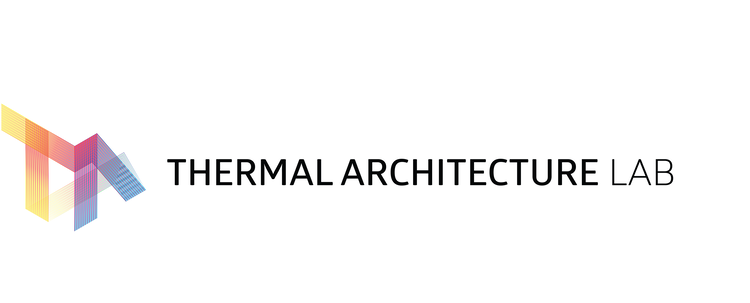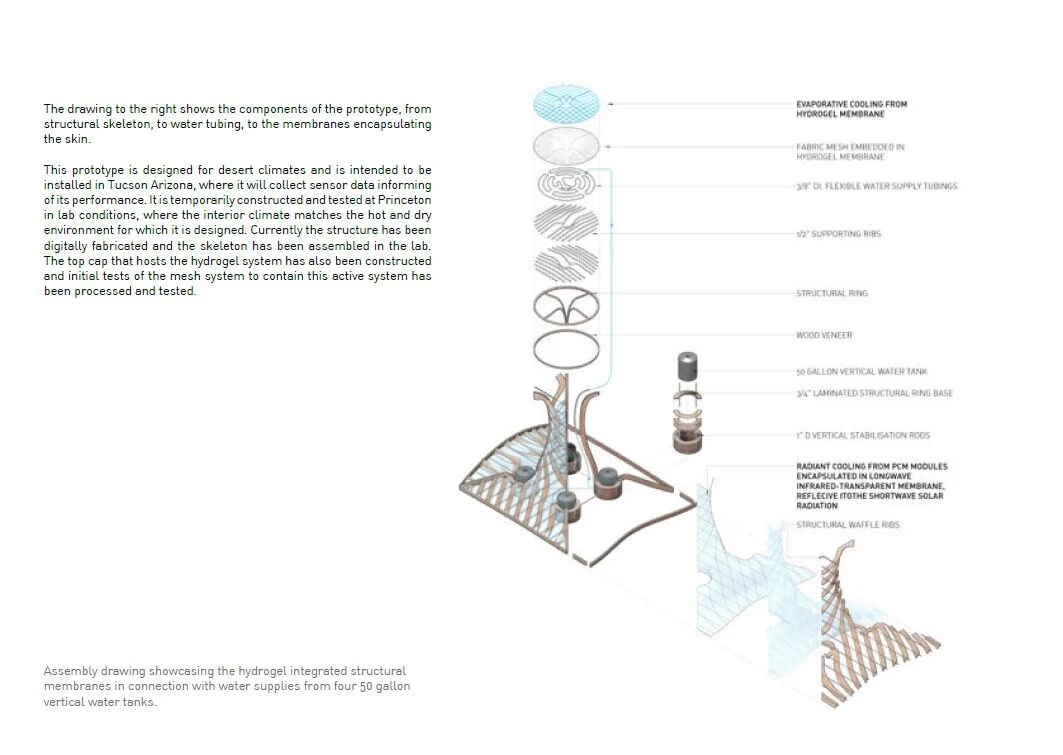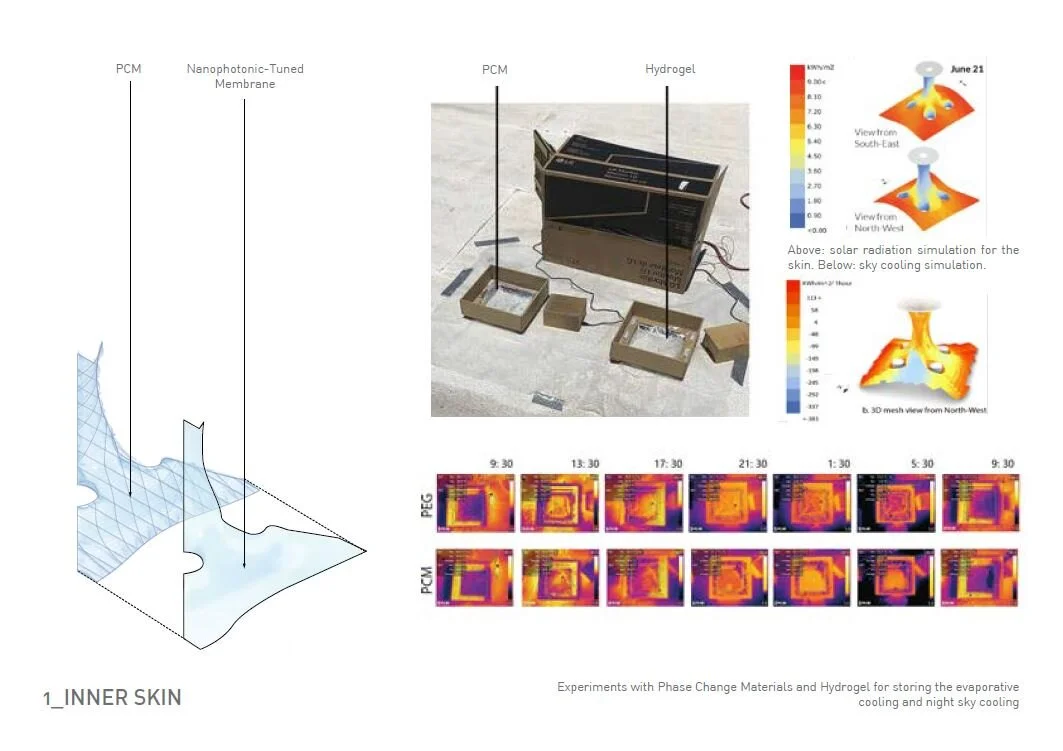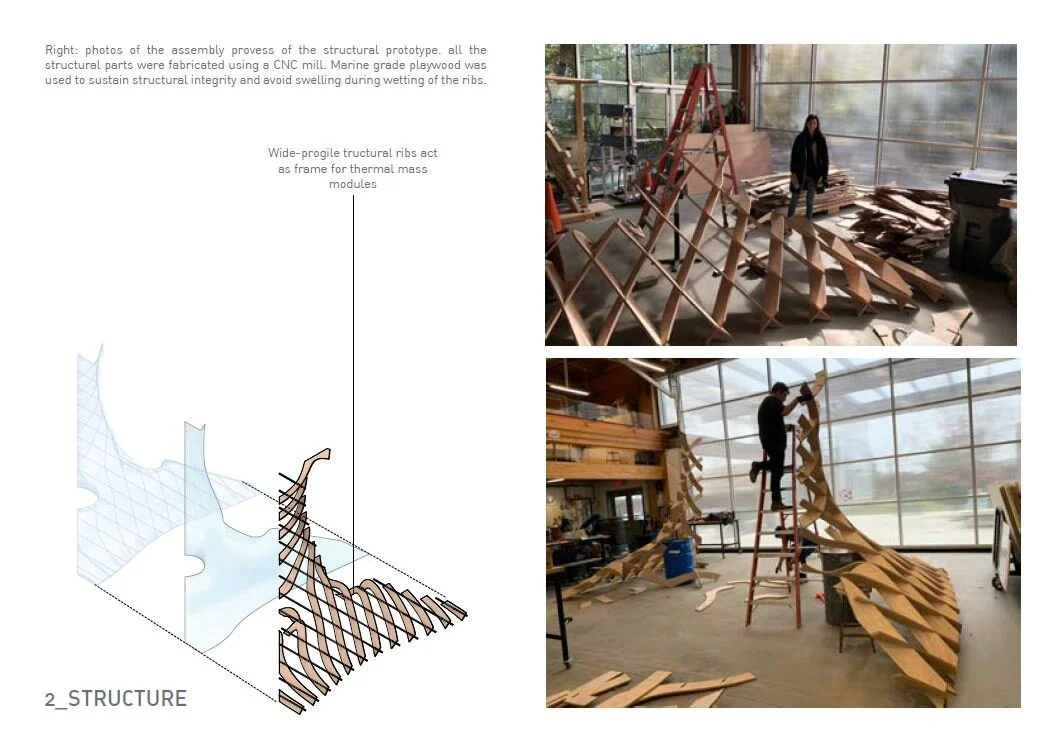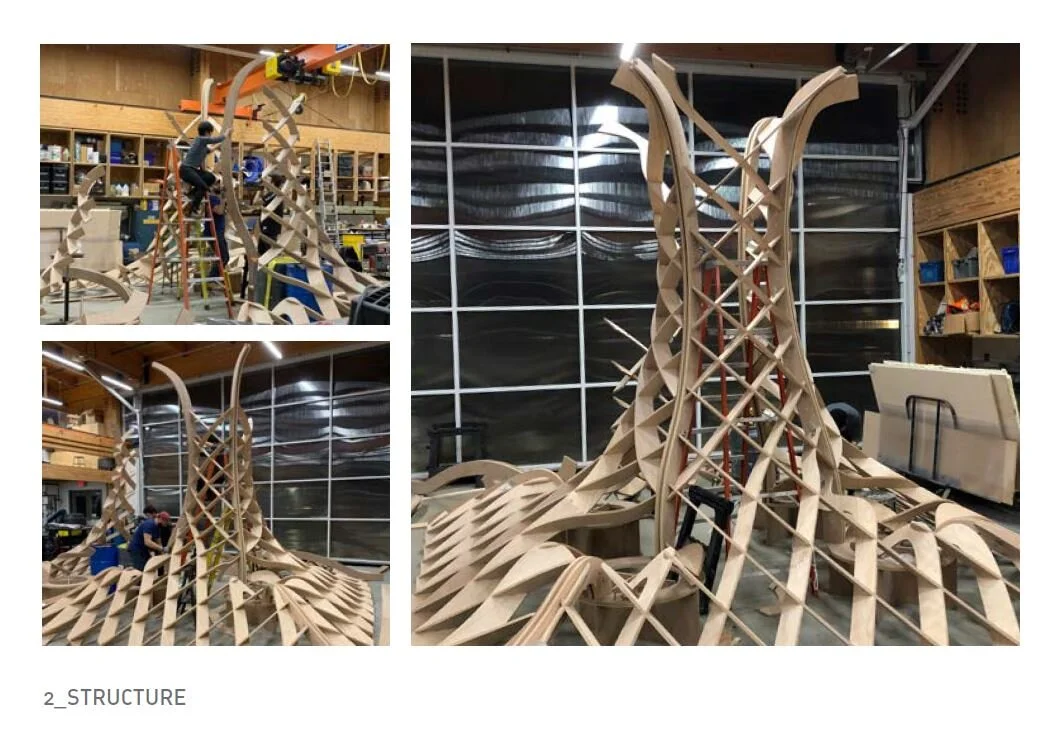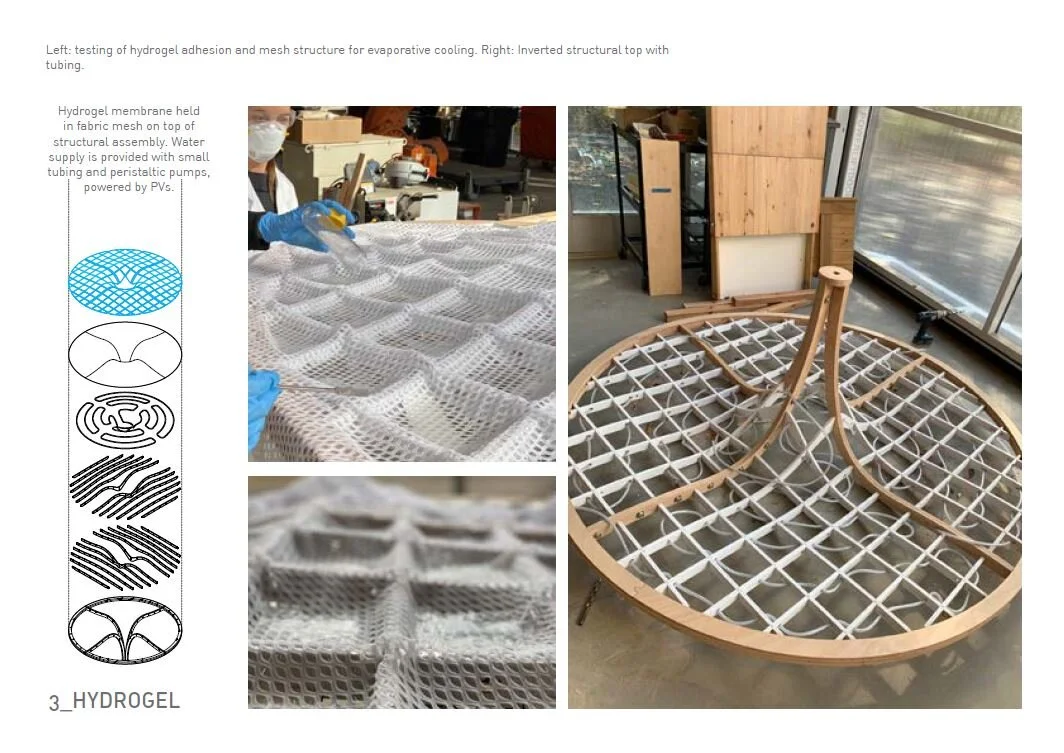Hydroculous
A roof aperture lined with hydrogel membrane is proposed for combined evaporative and radiative cooling in the desert climate. In order to determine the design, materials and predicted performance of this device, several types of digital simulations and physical experiments were performed. The proposed full-scale prototype, planned to be built and tested in Tucson, Arizona, responds to the climate’s extreme diurnal temperature gradient through the use of adaptive materials. During the day, the roofaperture acts as a downdraft chimney, trapping the hot dry air passing through it. The funnel-shaped top of the chimney is embedded with a wet hydrogel membrane, which humidifies the air, causing instantaneous cooling and a consequent downdraft airflow into the building’s interior. During the night, pockets of enclosed hydrogel encapsulated in the roof’s structural frame are exposed to radiative cooling from the night sky and act as thermal storage for additional cooling during daytime. The complexity of the system requires several simulation and physical testing methods to be employed simultaneously: digital simulation tools of CFD, solar radiation analysis, radiative heat loss analysis were employed to analyze the overall geometry’s effect on airflow radiant heat exchange; physical bench tests were conducted to analyze the performance of hydrogel membrane and compare it to other materials. A full-scale prototype will be built to validate the results of the model.
